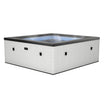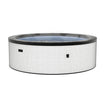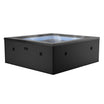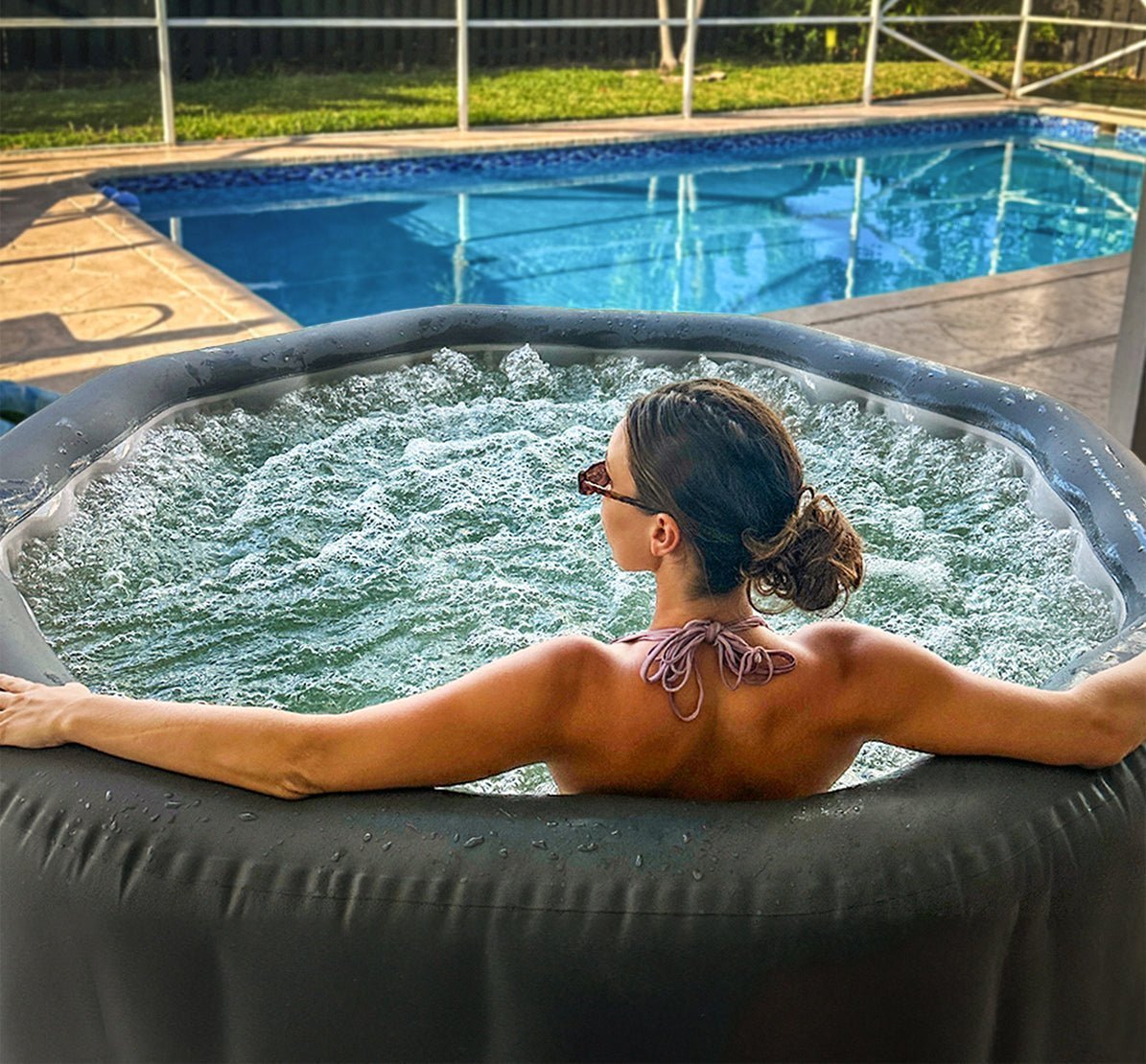Few things rival the simplicity and power of water therapy when it comes to physical recovery, stress relief, and overall wellness. But one debate continues to bubble up: Is a hot tub or an ice bath more beneficial?
At first glance, they couldn’t be more different. One invites you into soothing warmth, the other into icy challenge. But both have compelling health benefits, and in recent years, more people are exploring how to use each, or even combine them, for optimal results. Whether you’re a seasoned athlete, a weekend warrior, or simply looking to feel better in your own body, understanding the roles of hot and cold immersion can help you build a recovery routine that actually works.
Hot Tubs and Heat Therapy
Stepping into a hot tub is instantly relaxing. The warm water wraps around your body, immediately loosening tension in your muscles and joints. But beyond simple comfort, there’s real science behind why heat therapy has long been a go-to method for pain relief and recovery.
Heat causes your blood vessels to dilate, a process known as vasodilation. This increase in circulation helps deliver oxygen and nutrients to tired or injured tissues, accelerating recovery and reducing stiffness. For people dealing with chronic pain conditions, like arthritis, back pain, or fibromyalgia, this increased blood flow can bring consistent, long-term relief. It’s also a highly effective way to support recovery from less severe everyday aches and muscle fatigue, especially after a tough workout or a long day on your feet.
Benefits of Heat Therapy
Hot tubs are also excellent for reducing stress and supporting better sleep. Warm water immersion has been shown to lower cortisol (the stress hormone) and promote the release of feel-good chemicals like serotonin and dopamine. If used in the evening, it can signal your body that it’s time to wind down, helping you fall asleep faster and enjoy deeper rest.
The heat also relaxes the nervous system, which can be particularly helpful for people who experience anxiety or insomnia. And let’s not forget the cardiovascular benefits: while you're soaking, your heart works a bit harder to circulate blood through dilated vessels, which has been compared to light aerobic exercise in some studies.
In short, hot tubs do more than just help you relax. They’re powerful tools for physical recovery, pain relief, and mental clarity, especially when used regularly and safely.

Ice Baths and Cold Therapy
On the opposite end of the temperature spectrum lies the ice bath, a therapy that’s more intense, more invigorating, and, for some, more intimidating. Submerging your body into cold water, often between 10 to 15 degrees Celsius (50 to 59°F), isn’t easy at first. But for those who embrace the chill, the benefits are undeniable.
Cold immersion constricts your blood vessels in a process called vasoconstriction. This helps to reduce swelling and inflammation, which is why ice baths are widely used by athletes to accelerate recovery after intense physical exertion. When muscles are pushed to their limit, micro-tears occur in the tissue. While this is a normal part of building strength, the inflammatory response can cause soreness and delay performance. Ice baths help minimise that reaction, allowing for quicker turnaround between workouts or competitions.
The Benefits of Cold Therapy
But the effects of cold water extend beyond muscle recovery. Immersion in icy temperatures activates your sympathetic nervous system, leading to the release of adrenaline and dopamine. This can create a rush of mental clarity, elevated mood, and even a sense of euphoria for some users. Over time, regular cold exposure may help regulate your response to stress, improve immune function, and boost resilience, not just physically, but mentally as well.
There’s also growing interest in cold therapy’s role in reducing symptoms of anxiety and depression. Some research suggests that sharp temperature changes stimulate the vagus nerve, which can calm the body’s stress response and enhance feelings of well-being.
While short dips of just a few minutes are recommended for beginners, experienced users often build up to longer immersions. However, it's essential to proceed with caution and monitor your body carefully, especially in the beginning, as cold water therapy can carry risks if not done mindfully.

Should I Choose a Hot Tub or an Ice Bath?
So, which is better: the relaxing embrace of heat, or the invigorating shock of cold? The answer depends on your body, your needs, and your lifestyle.
If your primary goal is to ease chronic muscle or joint pain, reduce stress, or support restful sleep, hot tubs will likely be the more comfortable and sustainable choice. They’re especially useful for people with conditions that involve stiffness, limited mobility, or persistent aches that aren’t necessarily tied to high-intensity exercise. A hot soak at the end of the day can do wonders for physical and emotional balance.
On the other hand, if you regularly engage in heavy training, sports, or physically demanding work, ice baths might offer more immediate relief. They're ideal for treating inflammation, reducing muscle soreness, and speeding up recovery times. Cold water immersion is also perfect for those looking to challenge their mental resilience and experience a quick physiological reset.
Ultimately, though, the two therapies are not mutually exclusive. In fact, one of the most effective approaches to recovery is to combine them in a contrast therapy routine.
Contrast Therapy: Combining Hot and Cold
Contrast therapy, which is the process of alternating between hot and cold immersion, has emerged as a powerful method for enhancing recovery and overall wellness. It takes advantage of the best features of both approaches: the muscle-relaxing, circulation-boosting effects of heat, and the inflammation-reducing, mentally stimulating effects of cold.
A typical contrast therapy session might begin with 10 to 15 minutes in a hot tub, followed by 2 to 5 minutes in an ice bath. This cycle can be repeated several times, and many people report feeling refreshed, invigorated, and noticeably less sore afterwards.
The alternating temperatures cause your blood vessels to expand and contract repeatedly, which helps pump blood and lymphatic fluid throughout the body. This can speed up the removal of metabolic waste, reduce delayed onset muscle soreness, and support the regeneration of tissues. It also keeps your nervous system sharp and adaptable, making it a great tool for mental training and stress management.
Many professional athletes and physical therapists use contrast hydrotherapy to help clients bounce back from injuries, hard training sessions, or periods of intense fatigue. But you don’t need to be an elite athlete to benefit. With the right setup, such as a hot tub from Wave and a DIY cold plunge, you can enjoy the perks of contrast therapy right at home.
Creating Your Wellness Routine
Deciding between a hot tub, an ice bath, or both comes down to your personal wellness goals. If comfort, daily stress relief, and joint mobility are your focus, a hot tub might be your best investment. If performance, quick recovery, and mental grit are your goals, ice baths might offer more bang for your buck.
For those who want it all, combining both can provide a balanced, holistic approach to recovery. At Wave Spas UK, our range of premium yet affordable hot tubs makes it easy to start your wellness journey. Explore our hot tub guide for more information. Pair one with a cold plunge ice bath or even a cold outdoor shower setup, and you’ll have everything you need to take your health and recovery to the next level.
For more advice on heat therapy and our hot tub selection, don’t hesitate to contact our expert team.
















Leave a comment
This site is protected by hCaptcha and the hCaptcha Privacy Policy and Terms of Service apply.